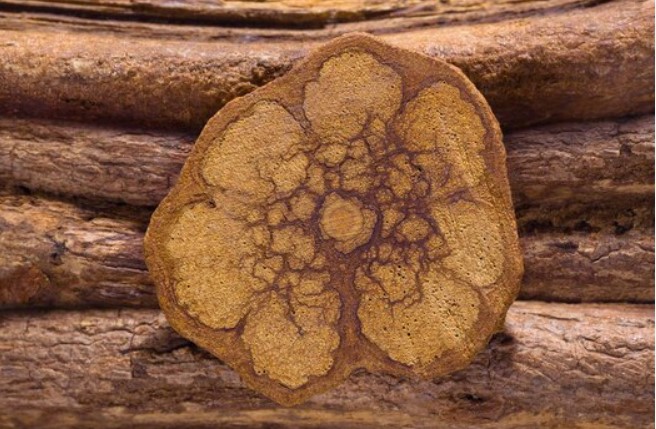Paul Melancon was desperate. It was December 2010, and the singer-songwriter from Atlanta, who was then 42, had been living with a diagnosis of severe recurrent depression for 7 years. He had taken just about every prescription antidepressant on the market — Prozac, Wellbutrin, Celexa, Effexor, Zoloft. He tried individual medications alone. Then he tried them in what doctors said might be a more effective combination. While the drugs might have taken the edge off his depression, none provided real relief. And the side effects were unbearable.
“My hands would shake all the time. I was always clenching my teeth. My libido was gone. And I never felt any happiness. I just didn’t care about anything or feel anything. I would shift between feeling depressed and just feeling numb,” Melancon says. “I felt completely disconnected from the world.”
He was afraid to try the doctors’ next suggestion: electroconvulsive therapy. That’s when he came across an article in National Geographic Adventure written by a woman who said her unrelenting depression was lifted away after drinking a psychedelic plant-based brew called ayahuasca (AY-uh-WA-ska) in the Peruvian Amazon.
He found the writer’s email address and asked her a ton of questions. Then Melancon, who describes himself as “not especially adventurous,” planned a trip to a jungle in Peru with his wife. First he had to spend 3 awful months weaning himself off his medications to avoid dangerous interactions with the Amazonian medicinal plant. Intense depression and insomnia came back worse than ever. It was all he could do to get himself on the plane. He then took two flights and an hourlong bus ride into the jungle to reach the Blue Morpho Shamanic Ayahuasca Retreat Center. The jungle lodge — a cluster of bungalows with thatched roofs — draws visitors from all over the world.
“I would never have gone there and done this if I hadn’t felt like there was nothing else left,” Melancon says. “I would have tried any desperate solution that anybody gave me.”
Ayahuasca is a brew of two plants — the Banisteriopsis caapi vine and leaves of the Psychotria viridis shrub — native to the Amazon. Indigenous people of the upper Amazon basin, across Bolivia, Brazil, Colombia, Ecuador, and Peru, traditionally use the dark brown concoction in religious ceremonies. It’s intended to help people make connections with supernatural forces or forest spirits. By the 1990s, ayahuasca began showing up in the U.S., Australia, and around Europe. People try the hallucinogenic tea at religious ceremonies in their home countries or travel to retreats, as Melancon did, in Brazil and Peru. They seek out the substance for all sorts of reasons. Some want the trip. Others seek spiritual enlightenment. And an increasing number want the brew for its potential to heal their depression, addiction, and posttraumatic stress disorder (PTSD).
“Ayahuasca, like any psychedelic, is a tool,” says Alli Feduccia, PhD, a neuropharmacologist and researcher at the Multidisciplinary Association for Psychedelic Studies. “It’s probably not the right tool for everyone, but with properly trained people to help administer it and provide the necessary after-care, it has great potential to relieve a lot of mental health conditions and symptoms.”
Medicinal Plants from the Amazon
The vine used to create ayahuasca tea contains MAOIs (monoamine oxidase inhibitors). That’s the active compound in the first antidepressants ever developed. It helps activate leaves used in the hallucinogenic tea from another plant that contain the psychedelic chemical DMT (N,N-dimethyltryptamine). In the U.S., outside of religious ceremonies that include ayahuasca, DMT on
its own is an illegal, Schedule I Controlled Substance like heroin, LSD, and ecstasy. According the U.S. Drug Enforcement Administration, substances on this list pose a high risk for abuse and have no medical use.
But the belief that DMT has “no medical use” could change.
Researchers in Seattle have permission from the FDA to test ayahuasca as a treatment for depression in phase I randomized controlled trial, considered the most rigorous type of research. That trial has not yet begun.
Some studies suggest that ayahuasca has several potential health benefits. Some may come from the MAOI component and others from the DMT.
“Ayahuasca is a mix of chemicals. The big scientific question is exactly which ones are important for its effects and which ones are not,” says David Olson, PhD, an assistant professor in the department of biochemistry and molecular medicine at the University of California, Davis.
It could be that some parts of the elixir treat certain ailments and other components are helpful for other health problems. The mix has many potential benefits, according to limited research. Several studies include people who drink ayahuasca during religious or cultural rituals outside the U.S. Other research looks at animals or cells in petri dishes, which doesn’t confirm the plants would have the same effects on people.
Some evidence suggests ayahuasca helps fight viruses and cancer cells in the body. It seems to increase and redistribute immune cells to help the body fight disease better. It may protect and restore brain cells, which would make it useful for people with Parkinson’s or other neurological conditions. It may also reduce the ongoing inflammation that happens ahead of many chronic lifestyle-related diseases, such as diabetes and heart disease.
And according to research and many personal accounts, the brew may offer relief from depression, PTSD, and addiction when modern Western methods fail. That’s due, researchers think, to how the mixture affects the mind and the nervous system.
“I think that [psychedelics] are one of our best chances for finding really effective therapies for these diseases,” says Olson.
Your Brain on Ayahuasca
Melancon’s psychedelic trip had elements that many people describe in ayahuasca experiences.
The first night at the Blue Morpho retreat, Melancon, his wife, and 40 or so others convened in the ceremonial hut. Each person took a seat on a mat on the floor. Next to each mat was a roll of toilet paper and a bucket. Ayahuasca is notorious for causing diarrhea and vomiting. For that reason, the group hadn’t eaten since their small, purposefully bland lunch that afternoon. Some say the brew itself just makes you sick. But others believe the diarrhea and vomiting have a psychological purpose.
“It may be related to ayahuasca’s activity in the gut, or it may be that the body is releasing stored trauma,” says Feduccia.
Its potential to wash out old trauma from the psyche is why some see it as a powerful treatment for PTSD and drug addiction. While ayahuasca trips often bring up repressed, sometimes traumatic memories, they don’t always retraumatize the person in the way that consciously talking about it could, research shows. Some researchers believe it’s because the medicinal plants lower the person’s defenses. So, instead of facing the traumatic memory with fear, anxiety, and stress, the person can see it for the first time without the emotional charge.
“When we surveyed people who had tried ayahuasca for PTSD, many said that it helped them process the trauma and move past it,” says Feduccia. That’s not to say that the remedy doesn’t retraumatize anyone. That’s certainly a potential risk, she says.
The brew brings other risks, too. It can raise blood pressure. Someone with uncontrolled high blood pressure shouldn’t drink it. It’s also not safe for pregnant women or anyone who has glaucoma, heart problems, or disorders related to fat metabolism, such as Gaucher disease or Tay-Sachs. It’s not safe to take along with prescribed MAOIs or SSRIs — the most commonly prescribed antidepressants — ginseng, St. John’s wort, or cough medicines that contain dextromethorphan.
But for those that the plant medicine helps, researchers say the effects of one ayahuasca trip are like the insights brought about from intensive psychotherapy.
“Ultimately what ayahuasca does is it cuts to the chase of spiritual investigation,” says Jonathan Goldman, an Oregon-based spiritual teacher and healer who leads ayahuasca ceremonies. “People come to it for all sorts of reasons, but the motivation is to bring themselves into contact with their deeper self.”
It’s similar for people who turn to ayahuasca to help them kick drug addiction. Research shows that while under the influence of ayahuasca, people see the consequences of their behavior more clearly, which may motivate them to change. They may also be able to move past the trauma that led them to drug use. Some people say ayahuasca helps them face the denial and lies they tell themselves about their addiction.
“It seems to give them some clearing that allows them to see their life in a new light, where they want to make behavioral changes,” says Feduccia.
But there’s debate as to whether the “trip” that ayahuasca takes you on is even necessary to receive its health benefits.
“I think you can produce a therapeutic effect without the hallucinogenic effect,” says Olson. His research shows that the psychedelic plant causes brain cells to grow. He thinks that’s what’s behind the mental health benefits.
Olson’s research explores whether it’s possible to create a synthetic version of ayahuasca. “Pharma-uasca” is what some people in the field call it. This would allow for those who need it to get it in the form of a standardized pill, shot, or syrup — like any other drug in modern Western medicine.
“Something like 50% of the drugs we have were either inspired by or derived from natural products. But it’s challenging to make medicine directly from botanicals. They are, however, excellent inspiration for chemists,” says Olson.
Ideally, Olson would like to end up with a version of the plant medicine that causes the healthy brain changes without the psychedelic trip.
“Just how strong that effect would be, that’s another question. Maybe a full hallucinogenic dose would give you a stronger effect, but I think we have a lot of evidence now that suggests that you can at least get some therapeutic benefit without the hallucinogenic effects.”
From Goldman’s perspective, the effects are not a hallucination at all. “You’re seeing into what is. When you see what is, your whole self-perception changes. You are seeing your life and yourself in a completely different way.”
Melancon saw his depression in a new light. The shamans called the participants up to drink the thick brown liquid poured from jars at the front of the room. It tasted, Melancon recalls, like mud and battery acid. Once the medicine took effect, about a half-hour later, he was transported into a series of rooms.
One, an “operating room,” was pitch black except for illuminated lines moving around him to form geometric shapes. “I knew that these shapes, these lights, were intelligent beings and they were there to fix me,” he says. Melancon stresses that he is not someone who would have believed in mystical events like this before.
Though the “beings” were there to help him, the setting was still terrifying at times. “When it became too overwhelming, swoosh, I’d be in another room, a waiting room, where I could take a break, and then I’d be back in the operating room again.”
Geometric patterns and “ayahuasca beings” are common elements of the experience. So is a new way of seeing an old circumstance.
Turning A Corner
At one point in the hallucination, Melancon looked down on himself from high above as if he were God. “I saw myself as this old, fat, naked guy. Then God poked me in the belly and made me laugh. And I just felt loved. Like all that mattered was love and the rest was just noise and that I shouldn’t be suffering.”
That change in perspective has stayed with Melancon over the last 9 years since his ayahuasca trip. “I have a belief now that I did not have before,” he says. “That there is something more than this life and it wants me to know that I am loved.”
Melancon says he used to think that depression was all that he was. “And since I did ayahuasca, even when I am really low, I am able to say, ‘This isn’t the only feeling that you’ll ever have. You will feel a different way at some point.’ And I don’t know that I ever would have gotten to that if I hadn’t gone and done this whole thing.”
Scientists have managed to measure activity in the brain that might explain these changes in perception. MRIs, CT scans, and other tests show activity in regions of the brain involved in memory, emotions, and emotional processing. Researchers believe this might allow people to process past experiences in a new way. As for addiction, along with changing a person’s view of their drug use, ayahuasca appears to raise serotonin levels. This can ease withdrawal symptoms when someone stops using drugs. It can also weaken the pleasure felt when using drugs.
A single ayahuasca trip may not cure a person of depression, addiction, or PTSD in one fell swoop. But it could help them turn a corner and improve their chances in their recovery, researchers say.
Melancon remembers when he turned the corner.
There was a lake at the Blue Morpho retreat. Melancon had always avoided lakes — he didn’t like a body of water he couldn’t see through. But the day after than transformative ceremony, all he wanted to do was get into that lake.
“I was just floating there, and I felt so incredibly happy. I hadn’t felt happy in so long,” he says. For the rest of the day, he relaxed in a hammock, listened to music, and just felt happy. “It was the best day I had had in decades.”
When Melancon returned to the U.S. and to reality, he fought to hold onto that feeling. But it wasn’t easy. He created a screensaver from pictures of the lodge to be a constant reminder. He bought a bottle of Florida Water — the smell took him back to the Blue Morpho. Eventually, he had to go back on antidepressants.
But it was different this time.
His doctor put him on yet another antidepressant, and in just a couple of weeks, it worked. He had no side effects and got more relief than any other medication had provided.
“I don’t have any scientific evidence that says it was more effective because I did ayahuasca, but I felt like connections in my brain had been rewritten, and that maybe that made me more receptive to medication that I had been before,” he said. “I can’t prove it, and there’ll always be a part of me that thinks there’s probably some more logical reason, but that’s the reason that sticks with me right now.”
Original article: https://www.webmd.com/depression/news/20191031/can-psychedelic-ayahuasca-help-with-depression





Add Comment